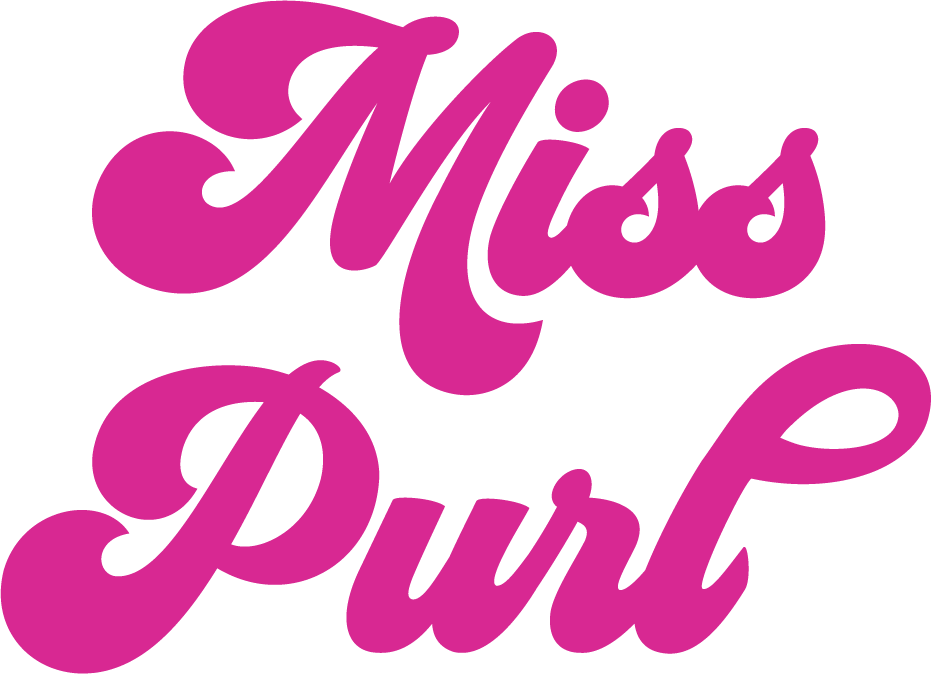Mwah! Keep it Simple Sweetie: Visual Differences Between Knit and Purl Stitches
Welcome to the first installment of our new series, Mwah! Keep it Simple Sweetie! This series is all about keeping the craft simple and enjoyable for one another by getting answers to the questions that stump us. The answers that aren't necessarily in a book or YouTube video. These tips are typically passed down between friends and hashed out through experience gleaned along the way. Without the fundamentals, it can be frustrating to follow a tutorial or progress in a project alone. We're here to share that stitch wisdom, to encourage and challenge one another to soar.
This article is about knit stitches. Click here to read the crochet anatomy article.
On Sunday, someone was working on a ribbing pattern (k2, p2) and they didn't know which stitch was next. They asked me to help them figure out which stitch to make. They were amazed I could see it "so clearly" and they "could not." It's not magic; it's memory. Believe in your ability to improve your skills stitch by stitch. Over time, a knitter will remember a knit and purl stitch's anatomy. Once this fundamental is learned, you're off to the races, seeing knits and purls everywhere! That's what I'm going to show you how to do right now, today!
Understanding Knit and Purl Stitches
Knit Stitch:
Appearance: The knit stitch creates a smooth, flat surface that looks like a series of "V" shapes. This is often referred to as the "right side" of the fabric.
Yarn Position: The yarn will be coming out of the back of the stitch on the needle.
Purl Stitch:
Appearance: The purl stitch creates a bumpy texture, which is often considered the "wrong side" of the fabric. The bumps look like mini, “pearls” or “hyphens” and are the signature feature of the purl stitch.
Yarn Position: The working yarn is exiting the front of the stitch.
Garter Stitch Pattern
When we knit every row, there will be rows of double ridges that look like smiles and frowns. The ridges are formed by the interlocking of knit stitches, where the top of one stitch interlocks with the bottom of the next stitch. This creates a textured fabric that looks the same on both sides, making it reversible.
Stockinette Stitch Pattern
In stockinette stitch, the "V" shapes are the knit stitches on the front, and the bumps are the purl stitches on the back side. This creates a smooth, flat fabric on the front and a bumpy texture on the back.
Rib Pattern
When working on ribbing, you'll see two protruding columns comprised of "V" shapes (knit stitches) and receding ridges or valleys, which are the purl stitches. The first row of the rib pattern on the needle will show the purl stitch appearing flush or snug against the needle, while the knit stitch will look like a loop hanging from the needle. Close your eyes and imagine a National Geographic video: the purl stitch is like a koala bear with its legs and hands on a branch, while the knit stitch is like a cat hanging off a ledge.
What Does It Mean to Continue to Knit in Pattern?
When we say "continue to knit in pattern" or "knit the row," it means to follow the existing pattern by knitting the knit stitches (the "V"s) and purling the purl stitches (the bumps). If you can identify the "V" and the bump, you don't need to look closely at the pattern to see what's next—assuming the pattern has no increases or decreases. Therefore, enjoy the flix and conversation!
Comparison with Purling Every Row
Interestingly, garter stitch (knitting every row) looks exactly like purling every row, but not for the same reason. In garter stitch, the knit stitches interlock to form ridges. When you purl every row, the purl stitches do not interlock in the same way, resulting in a slightly denser fabric. To tell the difference between a purl stitch pattern and garter stitch pattern, gently pull the rows apart. In garter stitch, you'll clearly see two knit (V) rows in between each ridge.
Wrapping Up
I hope this guide to distinguishing between knit and purl stitches has helped untangle any confusion and boosted your confidence in identifying different stitches. Remember, with time and practice, you'll easily be able to distinguish between them. Here's a tip that has always helped me: after I complete a stitch or a pattern repeat, I stop and closely look at the stitch to help me understand what I've stitched. This little pause can make a big difference in recognizing the stitch anatomy.
When working on ribbing, I count in my head: k2, p2, k2, p2. Keeping this cadence helps me learn to recognize the stitches through counting. You can do it too! By practicing and paying attention to the details, you'll soon be able to identify knit and purl stitches effortlessly.
Believe in your ability to improve your skills stitch by stitch. And remember, I'm here to help and remind you along the way. Happy knitting, and see you soon! 🧶✨





